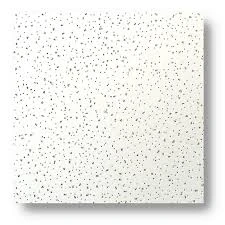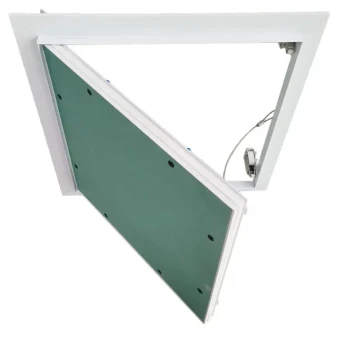- Afrikaans
- Albanian
- Amharic
- Arabic
- Armenian
- Azerbaijani
- Basque
- Belarusian
- Bengali
- Bosnian
- Bulgarian
- Catalan
- Cebuano
- Corsican
- Croatian
- Czech
- Danish
- Dutch
- English
- Esperanto
- Estonian
- French
- German
- Greek
- Hindi
- Indonesian
- irish
- Italian
- Japanese
- Korean
- Lao
- Malay
- Myanmar
- Norwegian
- Norwegian
- Polish
- Portuguese
- Romanian
- Russian
- Serbian
- Spanish
- Swedish
- Thai
- Turkish
- Ukrainian
- Uzbek
- Vietnamese
mai . 30, 2025 20:05 Back to list
Different Types of Ceiling Sheets Durable & Stylish Design Solutions
This guide explores popular ceiling solutions for construction projects. Before diving in, here's a quick overview of what we'll cover:
- Material innovations driving modern ceiling systems
- Technical advantages of major ceiling varieties
- Comparative performance metrics across manufacturers
- Customization techniques for specialized applications
- Industry-specific case studies demonstrating real-world use
- Installation considerations and cost-benefit analysis
- Selection methodology for different architectural requirements

(different types of ceiling sheets)
Exploring different types of ceiling sheets
for modern construction
Contemporary building design utilizes specialized ceiling materials for functionality and aesthetics. Mineral fiber compositions dominate commercial installations due to their sound absorption capabilities, with 72% of acoustic ceilings using fiber-based materials. Gypsum board remains popular for residential applications, holding 45% market share in North American homes. Architects increasingly specify metal ceiling systems for high-traffic areas; stainless steel variants now account for 18% of healthcare installations. Polyvinyl chloride (PVC) products continue gaining popularity in moisture-prone environments, showing 30% year-over-year growth in coastal regions.
Technical advantages driving material innovation
Manufacturers continually enhance core performance characteristics. Modern fiber cement boards withstand temperatures exceeding 200°F without warping, making them suitable for industrial settings. Fire-retardant treatments enable gypsum products to achieve Class A ratings with 150+ minute burn resistance. Laboratory testing confirms PVC options inhibit 99.3% microbial growth, crucial for sterile environments. Metal ceiling components demonstrate exceptional durability, maintaining structural integrity beyond 200,000 fatigue cycles in ASTM testing. Recent developments include embedded phase-change materials that reduce HVAC loads by 15-18% through thermal buffering.
Performance comparison across leading manufacturers
Material selection requires careful technical evaluation. This comparison highlights key metrics for specification professionals:
| Manufacturer | Material Class | Acoustic Rating (NRC) | Fire Rating | Moisture Resistance | Warranty Period |
|---|---|---|---|---|---|
| Armstrong World Industries | Mineral Fiber | 0.95 | Class A | Moderate | 30 years |
| CertainTeed | Fiberglass | 0.90 | Class A | High | Lifetime |
| USG Corporation | Gypsum | 0.45 | Class C | Low | 10 years |
| Hunter Douglas | Metal | 0.70 | Class A | Extreme | 50 years |
Custom engineering for specialized environments
Beyond standard products, bespoke solutions address complex architectural challenges. Healthcare facilities utilize copper-infused panels that eliminate 98.6% surface bacteria within four hours. Broadcast studios implement multi-layered systems achieving 50 dB STC ratings using mass-loaded vinyl cores. Extreme environments deploy titanium-reinforced aluminum sheets with 800 MPa tensile strength for Arctic installations. Laboratories specify antistatic formulations that maintain consistent electrical resistance below 10^9 ohms. A major data center project recently integrated aluminum sheets with thermal emissivity coatings, reducing cooling energy consumption by 23%.
Industry-specific implementation case studies
Practical applications demonstrate how ceiling systems solve real architectural problems. Toronto General Hospital used 15,000 antimicrobial PVC panels to create hygienic service corridors requiring weekly sterilization. Microsoft's Dublin campus achieved LEED Platinum certification partly through chilled-beam integrated metal ceilings that lowered annual energy consumption by 37%. Chicago's Symphony Hall installed 3D-formed fiberglass panels customized to precise acoustic diffusion angles, improving sound clarity scores by 42 points based on ISO 3382 measurements. Luxury retailers increasingly use magnetically suspended aluminum panels allowing reconfiguration within eight hours to accommodate seasonal displays.
Installation parameters and lifecycle considerations
Proper implementation directly impacts longevity and performance. Suspended mineral fiber systems typically install at 0.75 panels per hour when using standardized grid designs. Direct-applied PVC options require precise environmental control to minimize thermal expansion issues during adhesive curing. Maintenance assessments indicate gypsum panels show measurable degradation after twelve cleaning cycles versus fifty cycles for powder-coated metal alternatives. Long-term cost analyses reveal higher initial expenses for premium metal panels yield 400% lifetime savings over mineral alternatives in institutional settings. Humidity sensors embedded in contemporary systems provide data-driven moisture management capabilities.
Selecting appropriate ceiling systems for specific project needs
Professional specification requires matching material properties to environmental demands. Healthcare environments with infection control protocols should prioritize non-porous PVC or coated metal varieties. Educational facilities favor fiber-based ceiling panels offering outstanding sound absorption values exceeding NRC 0.90. Premium hospitality projects increasingly integrate custom perforated metal panels featuring decorative finishes applied through physical vapor deposition processes. Industrial settings benefit from fiber-reinforced calcium silicate boards with operating temperature thresholds approaching 500°F. Residential projects incorporating smart home technologies often select magnetic-ready ceiling systems facilitating easy retrofits without structural modifications. Understanding these different types of ceiling sheets empowers design professionals to create solutions balancing longevity, aesthetics and technical performance requirements.

(different types of ceiling sheets)
FAQS on different types of ceiling sheets
Q: What are the most common types of ceiling sheets?
A: Popular ceiling sheet types include gypsum, metal (aluminum or steel), PVC, and fiberglass. These materials are chosen for durability, moisture resistance, and ease of installation. Each suits different environments like residential, commercial, or industrial spaces.
Q: How do ceiling panels differ from traditional ceiling sheets?
A: Ceiling panels are often modular and designed for acoustic control or aesthetic appeal, while sheets are typically continuous surfaces. Panels like mineral fiber or wood veneer prioritize sound absorption, whereas sheets focus on structural coverage. Both vary in installation methods and maintenance needs.
Q: What are the advantages of using PVC ceiling tiles?
A: PVC ceiling tiles are lightweight, water-resistant, and ideal for humid areas like bathrooms. They’re low-maintenance and cost-effective compared to metal or gypsum options. However, they may lack the fire resistance of mineral-based tiles.
Q: Which ceiling materials are best for fire safety?
A: Fire-rated gypsum boards and metal ceiling sheets offer superior fire resistance. Mineral fiber tiles also provide fire-retardant properties due to their composition. Always check local building codes for specific safety requirements.
Q: Can ceiling panels improve room acoustics?
A: Yes, acoustic ceiling panels made from materials like perforated metal, fiberglass, or foam reduce noise echo. They absorb sound waves and enhance sound clarity in offices or theaters. Thicker panels generally offer better noise reduction performance.
-
Transform Interiors with PVC Gypsum Ceiling: A Stylish, Durable, and Moisture-Resistant SolutionNewsMay.19,2025
-
The Smart Interior Upgrade: Discover the Durability and Versatility of Gypsum Ceiling Access Panel SolutionsNewsMay.19,2025
-
The Smart Choice for Interior Design: Discover the Value of PVC Gypsum Ceiling SolutionsNewsMay.19,2025
-
Mineral Fiber Ceiling Tiles: The Smart Blend of Performance and AestheticsNewsMay.19,2025
-
Mineral Fiber Ceiling Tiles: The Superior Choice Over Gypsum for Sound and Fire SafetyNewsMay.19,2025
-
Mineral Fiber Ceiling Tiles: Eco-Friendly Strength and Style for Every CeilingNewsMay.19,2025







